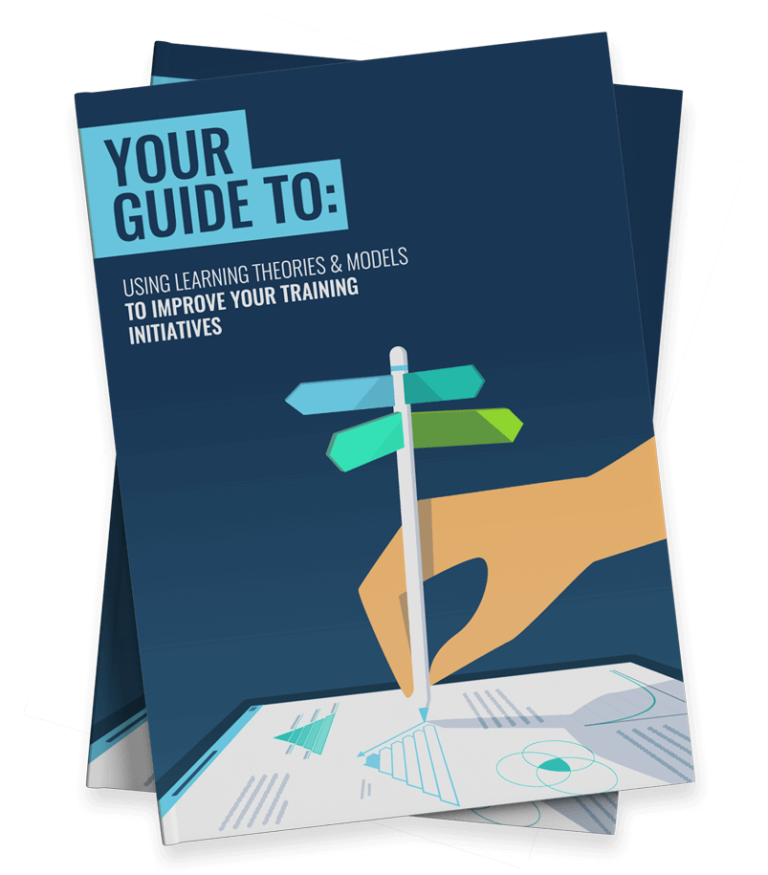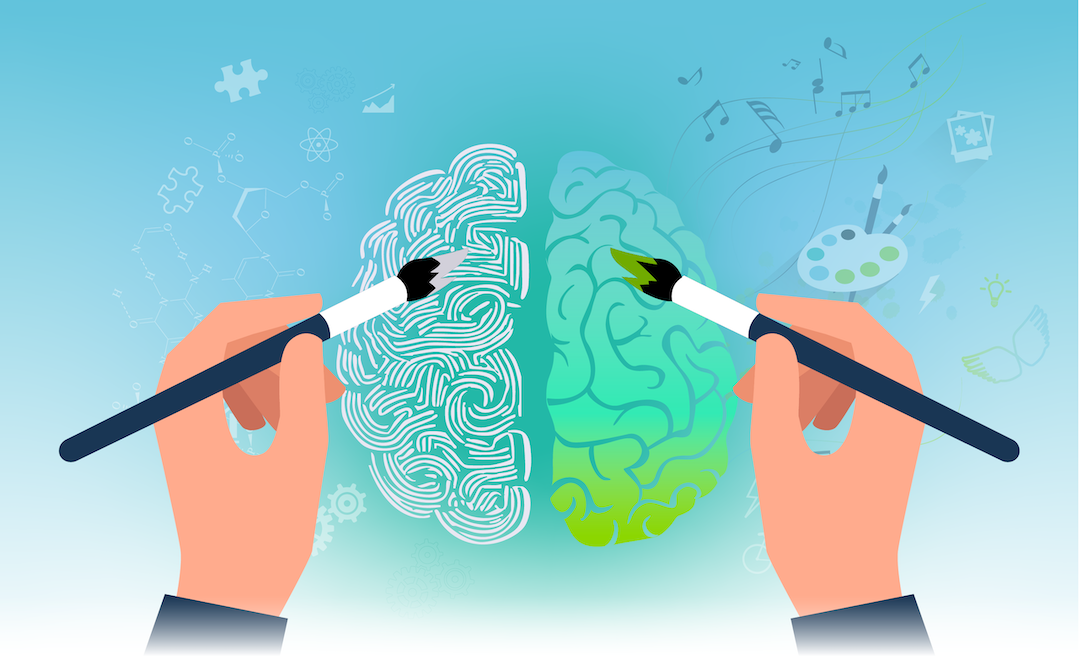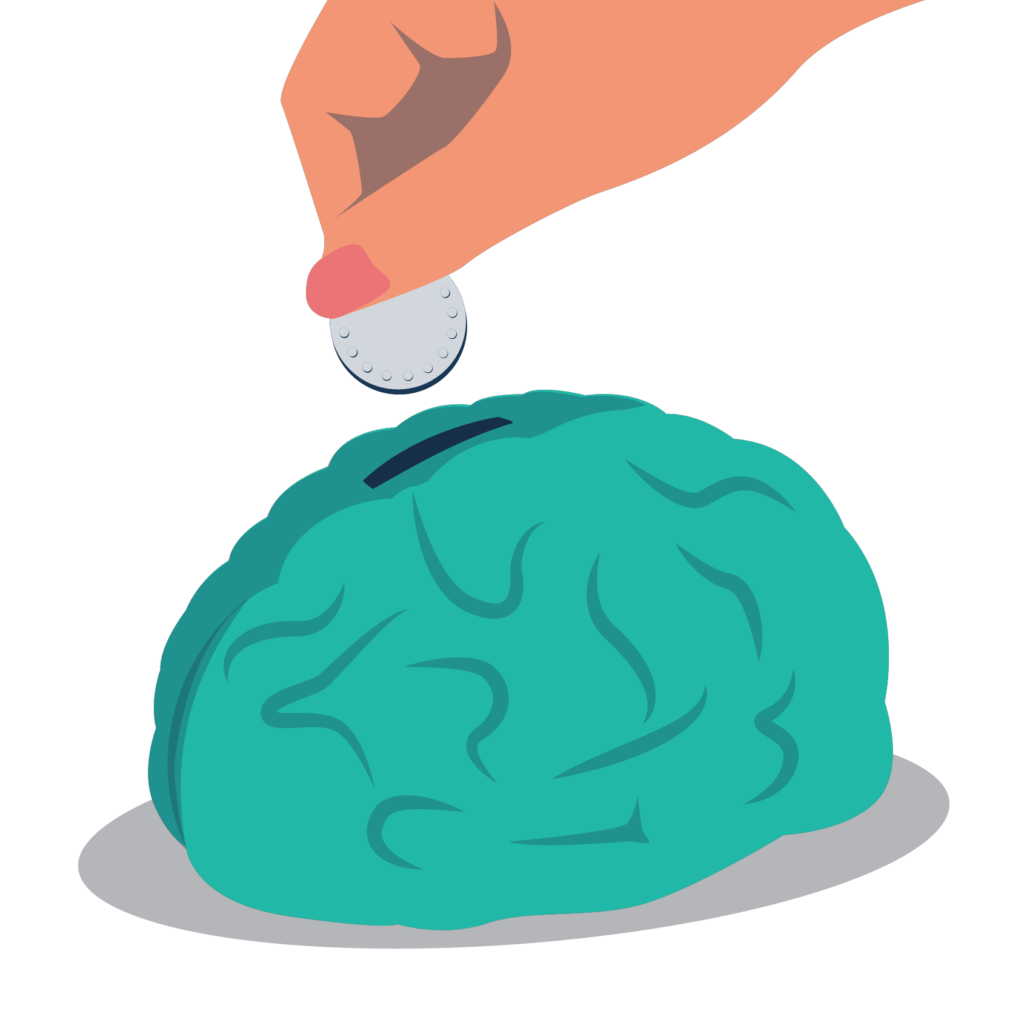
Are we a blank slate shaped solely by our surroundings? Think again! Cognitivism and Cognitive Learning Theory (CLT) suggest we are much more than passive products of our environment. This theory explores how our minds actively process, interpret, and build knowledge from experiences.
Your brain is not a passive sponge that simply absorbs information with no effort. Our minds actively engage with new information, building connections to what we already know, prioritising what’s important, and filtering for long-term memory.
These mental processes are all acts of cognition, or ways that our brains attempt to make sense of the world. We’re remarkably adept at this process. In computing terms, our brains can perform the equivalent of an exaflop — that’s a billion-billion calculations and cognitive feats per second.
With this much power at our fingertips, it’d be a shame not to use it. Indeed, by understanding how cognition works, we can design more effective learning experiences that take advantage of the brain’s natural strengths.
In this article, we’ll crack the code of Cognitive Learning Theory, exploring its origins, practical applications and how you can leverage it to design training opportunities that foster deeper understanding. Long-term knowledge retention and refined critical thinking skills await.
So, put those thinking caps on and let’s get started!
What Is Cognitive Learning Theory?
Cognitivism is a psychological framework that arose as a response to behaviorism in the 1950s. Behavioural learning theory suggests that we learn through conditioning, or through interaction with the environment around us.
Cognitive Learning Theory, on the other hand, suggests that our cognitive processes have a role to play in determining knowledge and behaviour. These are the mental operations (such as analysing, organising and storing) that we use to understand the world around us.
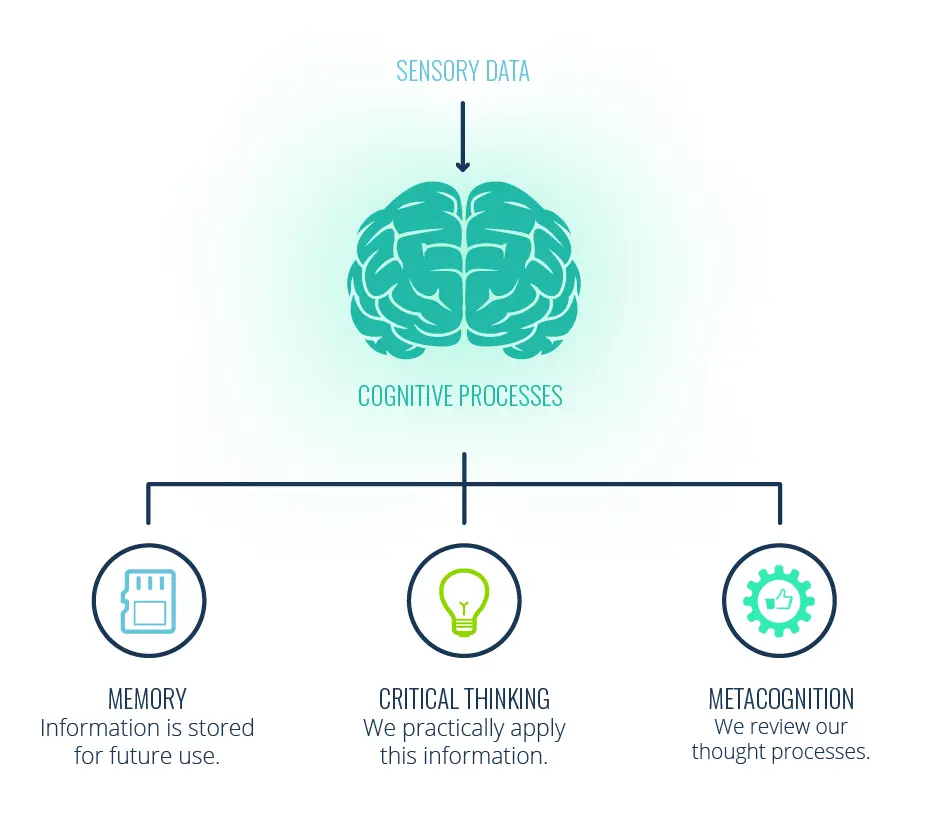
In other words, Cognitive Learning Theory suggests that learning is influenced by both external and internal factors.
Examining our internal mental processes, or thinking about thinking (aka. ‘metacognition’) is a popular philosophical pastime. Take Plato, for instance, who held that all knowledge is innate. Then there’s Descartes’ concept of ‘Cogito, ergo sum’ (‘I think, therefore I am’), which also demonstrates an emphasis on logical thought and deduction.
This line of thought blossomed in the work of Jean Piaget, a pioneering Swiss psychologist. Through systematic studies of cognitive development, Piaget laid the groundwork for both Constructivism and Cognitive Learning Theory as we know them today.
This is typified in his stages of cognitive development, which suggest that learning is an active and lifelong process that changes as we grow. We’ll delve into these development stages later, but first let’s unveil the engine behind all cognitive learning: the internal mental processes at play.
Cognitive Learning: The Key Processes
As we’ve seen, Cognitive Learning Theory focuses on how internal mental processes influence how we learn and retain information. With this in mind, let’s take a closer look at the key processes involved.
- Attention: This is our ability to focus on relevant information and filter out irrelevant details or distractions. After all, we can’t learn effectively if our attention is constantly being pulled in different directions.
- Information Processing: Similar to a computer, our brains take in information (an input), process it, store it, and retrieve it when needed (output). We’ll explore this idea further when we look at Information Processing Theory.
- Memory: As you might expect, our ability to learn relies on our ability to store and retrieve information. As such, Cognitive Learning Theory acknowledges the role that both our short-term memory and long-term memory plays in any learning process.
- Retrieval: Once information has been stored as a memory, we then need to be able to access and use it again in the future. Effective retrieval strategies and strong memory connections enhance learning.
- Metacognition: ‘Thinking about thinking’ is a key aspect of cognitive learning. This involves being aware of our own learning processes, strengths and weaknesses. Once we have this understanding, we can then refine our learning strategies.
- Motivation: It’s hard to make progress if we can’t summon up the desire to learn. Motivation is yet another internal factor that plays a crucial role in how much effort we put into learning and how well we ultimately perform.
Piaget’s Stages of Cognitive Development
For Piaget, children aren’t just empty vessels waiting to be filled with knowledge. They are active participants in their own learning, using internal processes to build and shape their understanding. As he puts it, ‘I find myself opposed to the view of knowledge as a passive copy of reality’.
This process continually evolves as they progress through the four stages of cognitive development. This model was developed by Piaget in the 1920s and 1930s. Indeed, Piaget was one of the first to identify that children think (and learn) differently from adults.
Albert Einstein labelled this discovery, ‘so simple only a genius could have thought of it’. To fully appreciate Piaget’s theory, it’s important to understand his view on how learning happens most effectively. He believed this involves achieving a balance between two central concepts:
- Assimilation: This is the process by which we fit new information into existing mental frameworks. It’s like filing something away in a familiar folder in your brain.
- Accommodation: This process takes place when we encounter something so new that it doesn’t fit within any existing framework. As a result, you’ll need to adjust or create an entirely new ‘folder’ for this information.
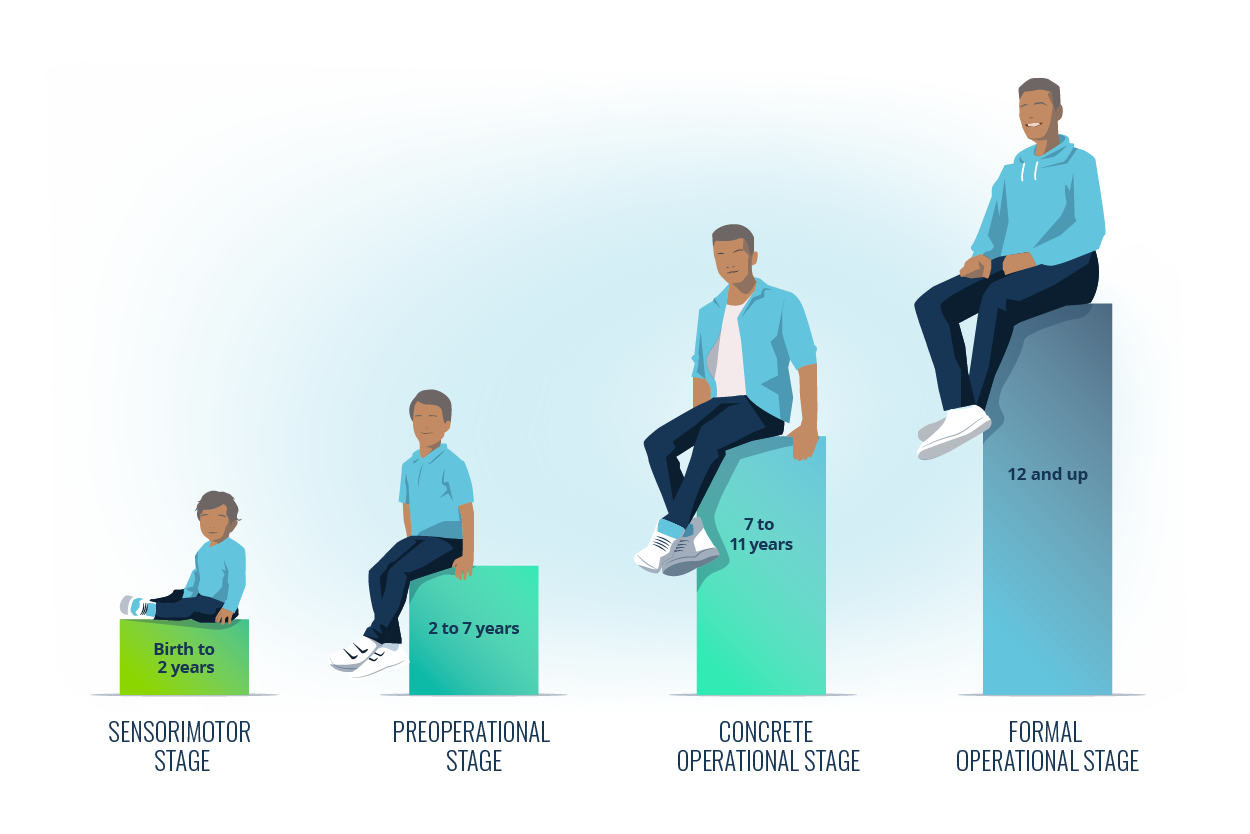
1. The Sensorimotor Stage (0-2 Years Old)
According to Piaget, our brains don’t hold any memories during the earliest stages of cognitive development. Consequently, we live solely in the present and take in information through assimilation.
During this time, we explore the world through our senses and develop basic motor skills. That’s why it’s called the sensorimotor stage.
However, towards the end of this stage that begins to shift. We achieve ‘object permanence’. This means we become aware that objects exist, even if they’ve been hidden from view.
Additionally, a range of other cognitive abilities begin to materialise. This includes self-recognition, deferred imitation and representational play.
2. The Preoperational Stage (2-7 Years Old)
The preoperational stage is a fascinating period where language emerges and symbolic thinking takes root. It’s here that we learn to use words and pictures to represent objects. For the first time, children start accommodating new ideas and adjusting their understanding.
In turn, this helps to fuel our imagination, which enables cognitive growth through ‘dramatic’ play (or make believe). This kind of play is considered to be one of the first demonstrations of metacognition in children.
At this stage, we are at perhaps our most curious. Indeed, young children ask almost 300 questions a day. However, our thinking is still egocentric, and we find it difficult to see things from the perspective of others.
3. The Concrete Operational Stage (7-11 Years Old)
Stage three is a game-changer. Here, children develop powerful reasoning skills and begin to think logically about the world around them. This is the result of a better balance between assimilation and accommodation.
This newfound ability gradually chips away at their egocentrism, allowing them to consider and understand other people’s point of view. That’s progress!
Unlocking logic helps thoughts to become more structured and organised, whilst still very concrete. As a result, abstract thinking (such as hypothetical scenarios and complex emotions) may still be difficult to grasp.
4. The Formal Operational Stage (12-15 Years Old)
The final stage is when abstract thinking truly blossoms. Here, teenagers and young adults can accommodate information more readily, reason about hypothetical situations and even develop theories.
This helps to pave the way for scientific thinking, allowing them to formulate hypotheses and systematically solve problems.
By the time this stage finalises (around 14-15 years old), adolescents have shed their training wheels and can think critically and solve problems independently. Furnished with deductive reasoning skills, they can now unravel complex situations and strategise for the future.
In other words, they’re now equipped with the cognitive tools they need to navigate an increasingly complex world.
Examples of Cognitive Learning Theory
Piaget’s groundbreaking work on cognitive development sparked a wave of research, leading to an even richer understanding of how we learn.
Today, we’ll delve deeper into two specific off-shoots of Piaget’s legacy: Information Processing Theory and Social Cognitive Theory.
Information Processing Theory
The rise of computers in the middle of the 20th century provided a powerful analogy for understanding how our minds might work. Indeed, early cognitive scientists were quick to compare the human mind to the functional capabilities of computers.
After all, both take in an input, process it, and retrieve it when necessary. This processing also involves encoding (making sense of the data), elaboration (connecting the data to existing knowledge), and storing the data so it’s easy to access in the future. Take a look at the example below, from Atkinson & Shiffrin, 1968.
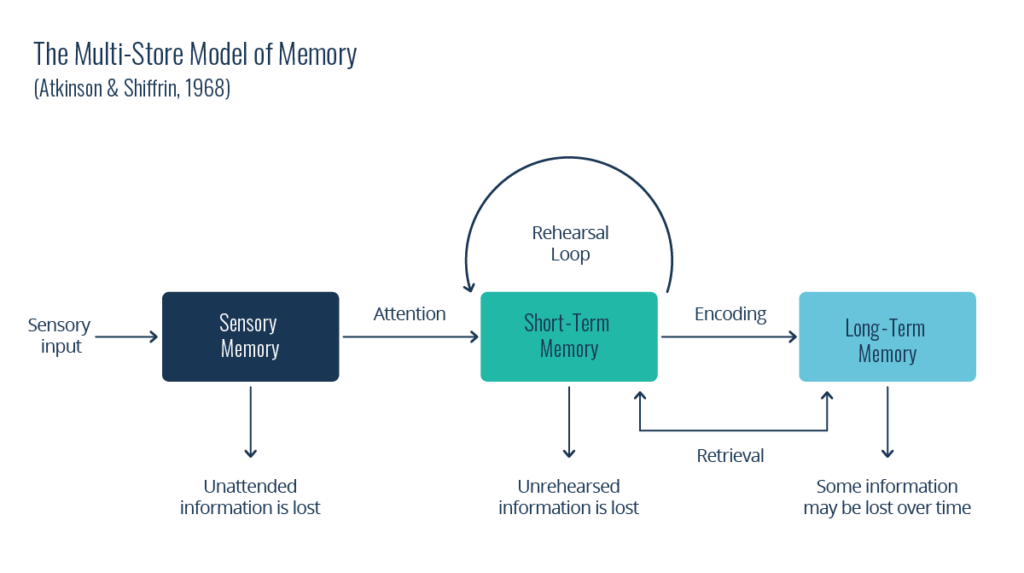
These sequential steps mirror Piaget’s idea of stages of cognitive development and provide a framework for understanding how information is transformed within the mind. Here are the key concepts to take into account when it comes to Information Processing Theory:
- Attention: How we focus on specific information and filter out potential distractions.
- Memory: The process of encoding, storing, and retrieving information.
- Problem-solving: Using cognitive processes to overcome obstacles and challenges.
- Decision-making: Evaluating information and selecting a course of action.
Of course, there are some limitations to this theory. After all, the human mind is more complex than a computer (for now, at least). Unlike computers, our minds are influenced by emotions, social interactions and cultural contexts. This brings us neatly to our next theory.
Social Cognitive Theory
In the 1960s, psychologist Albert Bandura laid the groundwork for Social Learning Theory. By 1986, this had evolved into Social Cognitive Theory, expanding its focus to encompass the powerful influence of social interaction on learning.
This theory acknowledges that we learn by observing the actions, behaviours, and consequences of others. Indeed, watching someone succeed or fail at a task can influence our own beliefs about our capabilities.
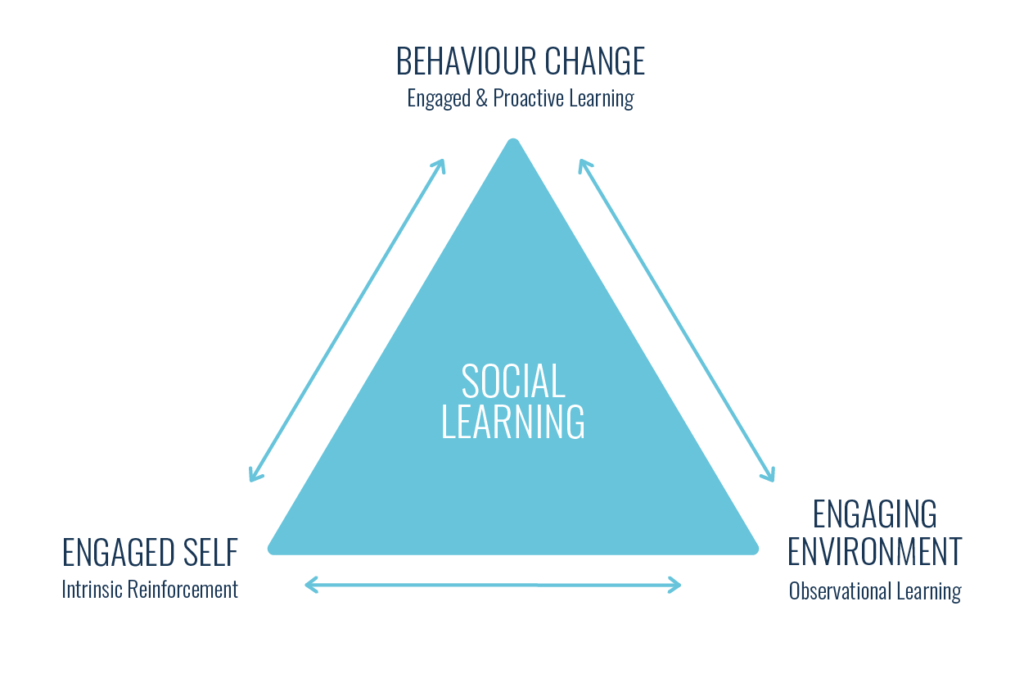
This is because of a fascinating concept called reciprocal determinism. With this three way loop, our personal thoughts and beliefs shape how we approach a situation, our social environment influences our behaviour, and our actions impact both the environment and ourselves.
Social Cognitive Theory truly fits the bill as a cognitive learning theory. While we learn by observing others, it’s the internal mental gymnastics we perform that actually solidify our understanding. Indeed, these cognitive processes are crucial for shaping our learning.
That said, as the name suggests, reciprocal determinism does rather imply a deterministic world view. This implies we’re limited by our environment and past experiences, which may not always be the case. Despite these limitations, Social Cognitive Theory remains popular to this day.
The Benefits of Cognitive Learning Theory
By focusing on our internal mental processes, Cognitive Learning Theory unleashes a wealth of benefits for both educators and learners. Here are some of the key advantages, as we see them.
- Deeper Understanding: As we’ve seen, cognitive learning requires the active processing of information. This means it goes beyond rote memorisation. After all, learners need to connect new information to their existing understanding and this typically leads to a better grasp of concepts.
- Improved Memory: Cognitive Learning Theory embraces learning strategies like elaboration and retrieval practice, which have been shown to strengthen our memories. As a result, learners will be able to retain information for longer and access it more readily when required.
- Problem-Solving: Cognitive learning emphasises critical thinking and metacognition. Consequently, learners develop the ability to effectively analyse situations, identify issues and come up with solutions. In other words, they become expert problem solvers.
- Increased Self-Efficacy: This increase in metacognition means that learners have a better understanding of their own learning processes and ability. Seeing progress in this area can help to build confidence. In turn, this can encourage learners to take on new challenges.
In short, Cognitive Learning Theory equips learners with the tools and strategies necessary for independent learning. As a result, they become more self-directed and less reliant on others to make progress. This is a great strategy to promote lifelong learning skills.
Metacognition: The Research
Research overwhelmingly supports the positive impact of metacognition on learning outcomes. By developing these skills, learners become more strategic, self-directed and successful. Take these studies, for instance:
- Schwartz & Metcalfe (1994): Did you know that confidence plays a role in learning outcomes? In this study, participants were asked to rate their confidence in their ability to recall information before attempting to do so. The results showed that higher confidence ratings were associated with better memory performance.
- Dunlosky & Rawson (2012): This study found that students who actively self-explained their learning material performed better on a final exam compared to those who simply re-read the material. This is similar to the protégé effect, which suggests that the best way to learn is to teach.
- Stanton, Sebesta & Dunlosky (2021): This more recent meta-analysis on self-regulated learning concludes that ‘strong metacognitive skills have the power to impact learning and performance’.
- Khan, Adnan & Raza (2023): This study of cognitive-behavioral instructional strategies shows a ‘significant difference in variance between the control group and the experimental group.’ In fact, the control group, who embraced metacognitive strategies, outperformed the other group by an average of 10 points.
- Other Studies: The Education Endowment Foundation (EEF) reports that metacognition and self-regulation strategies can propel learners forward by an impressive 7 months. This translates to a significant boost in learning and a dramatic reduction in the time it takes to reach competency.
The Limitations of Cognitive Learning Theory
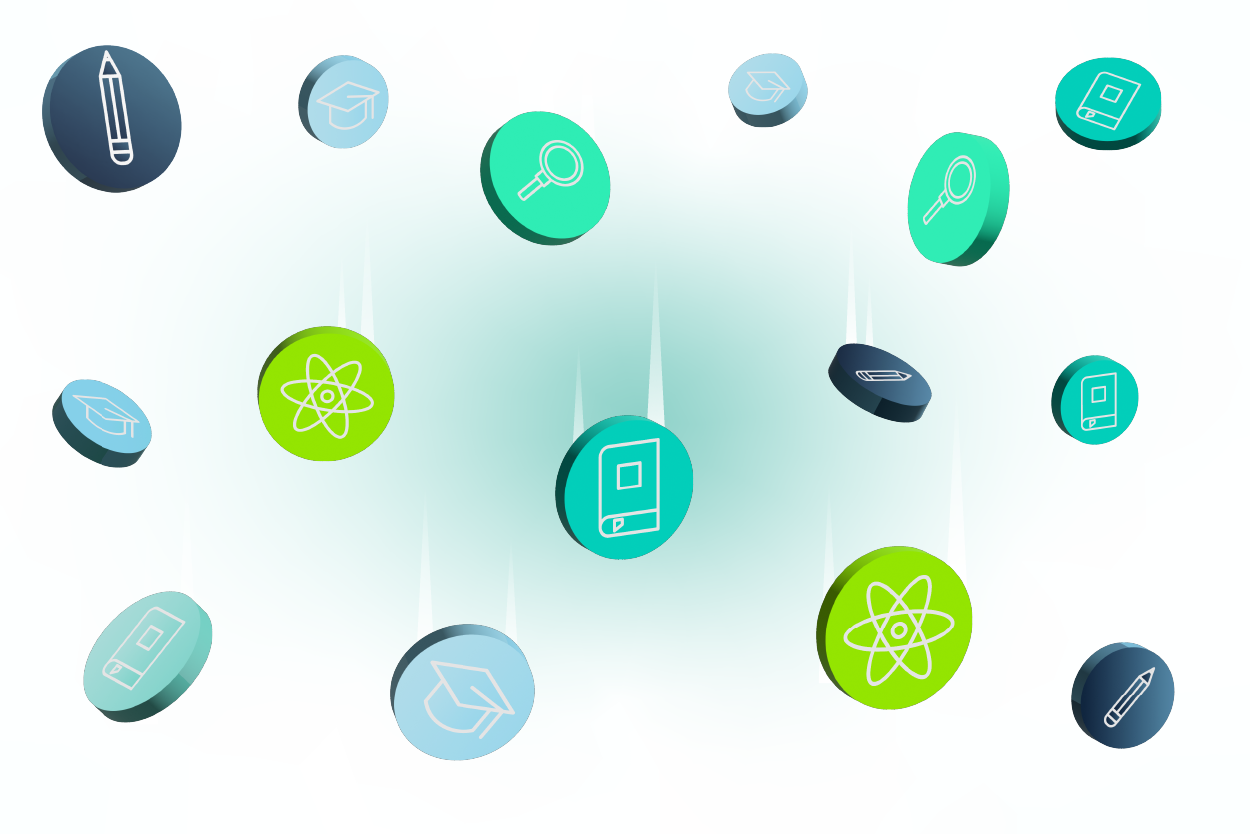
Cognitive Learning Theory is clearly capable of producing impressive results. That said, it does have its limitations. After all, this theory was formulated over 100 years ago. Here are some key areas where it has been challenged:
- Limited Scope: Critics argue that Cognitive Learning Theory downplays the role of social interaction, culture, and environmental factors in shaping our learning. While CLT sheds light on our internal world, it doesn’t capture the whole picture.
- Missing Motivation: What’s more, Cognitive Learning Theory doesn’t fully address the emotional side of learning. Factors like curiosity, interest and our mood play a crucial role in motivating us to learn. Despite this, CLT lacks a comprehensive explanation for their influence.
- Individual Differences: We’re all different. Despite this, Cognitive Learning Theory assumes a universal learning process, applicable to everyone. This is typified by the rigid nature of Piaget’s stages of development. As such, CLT may not fully address the needs of learners with diverse learning styles or preferences.
- Hard to Quantify: Unfortunately, we cannot directly observe cognitive processes. As a result, concepts like metacognition are difficult to measure objectively. This makes it challenging to empirically test and evaluate the effectiveness of this theory.
With all this said, Cognitive Learning Theory remains a valuable framework for understanding how our internal processes contribute to learning. The theory has practical applications in various fields, including education and training. We’ll explore these next.
Cognitive Learning Theory Strategies
Ready to transform the way you learn? This section dives into practical strategies based on Cognitive Learning Theory. This will empower your learners to actively engage with information, solidify their understanding, and unlock their full potential.
Here are our tips for applying Cognitive Learning Theory to your workplace learning and development (L&D) efforts.
- Get Active: Instructor-led training (ILT) sessions can often be passive learning experiences and may lead to information overload. Instead, encourage ‘hands on’ activities that promote active engagement, like simulations, case studies, group discussions and problem-solving exercises.
- Space it Out: Our brains retain information better when we have to retrieve it over spaced intervals. With this in mind, design your training programme so that your learners are required to revisit key concepts throughout their training journey. This can be facilitated by campaign-based learning and microlearning.
- Embrace Metacognition: Consider providing training on metacognitive strategies such as summarising, self-questioning and predicting. These techniques help your learners to monitor their understanding and take ownership of their progress. As we’ve seen, this has a considerable impact on learning outcomes.
- Encourage Reflection: Support your learners in reflecting on their learning progress. For instance, at the end of each training session or eLearning unit, ask questions like, ‘what worked well for you in learning this?’, or ‘what challenges did you face’? This self-awareness can produce better learning experiences in the future.
- Promote Collaboration: Create opportunities for employees to learn from each other. This could include collaborative learning projects, peer coaching or mentoring programmes. These interactions generate active engagement and help to get our brain juices flowing.
- Get Gamified: Gamification elements like experience points, badges and leaderboards encourage participation and competition. This can motivate your learners, fuel information processing and promote memory consolidation.
Finally, don’t forget to evaluate the effectiveness of your training programme. Use assessments, surveys, and other feedback mechanisms to check that you are meeting your learning objectives. This will help you to identify areas for improvement.
Final Words
Cognitivism and Cognitive Learning Theory emerged as a response to behaviorism, shifting the focus to how we process information internally. By recognising both internal processes and external stimuli, we are left with a more comprehensive understanding of learning.
As we’ve seen, the principles of Cognitive Learning Theory can be readily applied in various contexts, from educational settings to corporate training programmes.
By nurturing their cognitive skills, learners develop critical thinking, deeper understanding and increased confidence in applying their knowledge. This potent combination means they are better equipped to tackle challenges and solve problems.
Just imagine the impact on your organisation. If that doesn’t engage your internal mental processes, then we don’t know what will!
Thank you for reading. Cognitive Learning Theory is just one piece of the puzzle. Deepen your understanding with our guidebook, ‘The Learning Theories & Models You Need to Know‘. Download it now or explore specific theories below:

